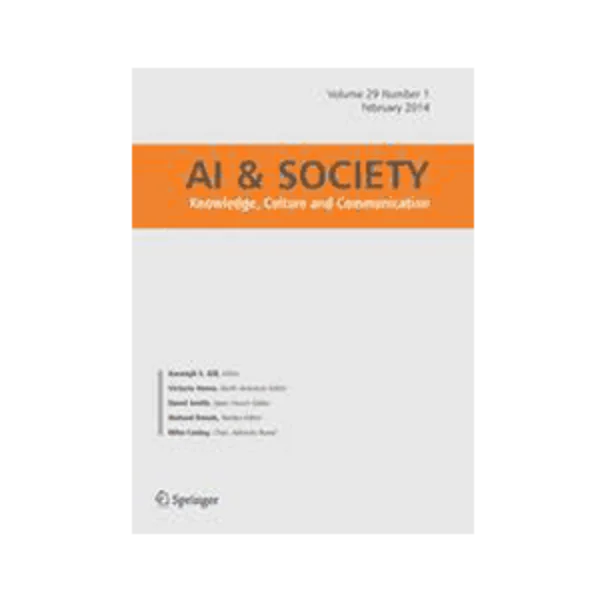-
gendering the digital body: women and computers
جزئیات بیشتر مقاله- تاریخ ارائه: 1392/07/24
- تاریخ انتشار در تی پی بین: 1392/07/24
- تعداد بازدید: 868
- تعداد پرسش و پاسخ ها: 0
- شماره تماس دبیرخانه رویداد: -
as we live in a culture where “everything can be commodified, measured and calculated and can be put in the competitive market for sale, detached from its roots and purpose,” there is need to redefine our humanness in terms of the changing nature of science, technology, and their deeper impact on human life. more than anything else, it is information technology that now has tremendous influence on all spheres of our life, and in a sense, it has become the destiny of our life. and this is where the real trauma lies. on the one hand, our being in the cyberspace opens up new and exciting horizons before us; on the other hand, we ourselves are changed and transformed in the process. the virtual world transforms human users to a problem-solver technocrat. the speed at which information technology is changing the way that youth around the world are socializing, playing, and researching, it is the common practice now for a 15-year old to go home and update their myspace page, followed by playing online games, or looking up the new trendy youtube video. these forms of technology are often the topic of adolescent conversations as youtube, blogs, e-magazines, face book, myspace, iphones, and ipods dominate the commercial and social networking market. some researchers refer to this phenomenon as ubiquitous technology drawing attention to the fact that ubiquitous technology acknowledges the speedy adoption of day-to-day use of technology as a global phenomenon. in this background, this article aims at revisiting the question, “what is to be human in the era of ubiquitous technology?” from a feminist perspective, one can still redefine the boundaries between femininity and masculinity in the context of it and its impact on our lifestyle and thought style. while examining the ways in which our definitions of “woman” and “man” are shifting in this new communication environment, elizabeth lane lawley observes that we cannot fix a single center from which the experiences of women with computer and communication systems can be viewed and that such fixity would only serve to deepen inequities rather than exposing and removing them. she finally submits, “it is possible to use new theoretical perspectives on the shifting boundaries of gender definitions to rethink a previously deterministic view of the effect of new technologies on society, and particularly the effect of those technologies on women. while the gradual absence of the subject from the field of artificial intelligence leads to the invisibility of feminine care along with social and relational nature of man, some feminists dismiss the biological sex distinction on such issues and encourage females to ‘imitate man’ and to become more aggressive, assertive and dominating” (lawley 1993). what are the possible impacts of this new technology on the so-called feminine traits of our human nature? how far our definitions of “woman” and “man” are shifting in this new communication environment? this is what this article seeks to explore.
مقالات جدیدترین رویدادها
-
استفاده از تحلیل اهمیت-عملکرد در ارائه الگوی مدیریت خلاقیت سازمانی و ارائه راهکار جهت بهبود
-
بررسی تاثیر ارزش وجوه نقد مازاد بر ساختار سرمایه شرکت های پذیرفته شده در بورس اوراق بهادار تهران
-
بررسی تأثیر سطح افشای ریسک بر قرارداد بدهی شرکت های پذیرفته شده در بورس اوراق بهادار تهران
-
بررسی تأثیر رتبه بندی اعتباری مبتنی بر مدل امتیاز بازار نوظهور بر نقد شوندگی سهام با تأکید بر خصوصی سازی شرکت ها
-
تأثیر آمیخته بازاریابی پوشاک ایرانی بر تصویر ذهنی مشتری پوشاک ایرانی (هاکوپیان)
-
تعیین رابطه پره اکلامپسی با دی دایمر در زنان باردار
-
بررسی تاثیر ابعاد، موقعیت و شکل بازشوها بر رفتار سقف های دال بتی دوطرفه
-
بررسی تاثیر منابع معنوی بر عملکرد مالی سازمان با در نظر گرفتن اثر میانجی فرآیند و عملکرد هیات مدیره (مورد مطالعه: شرکت خدمات ارتباطی مخابراتی رایتل)
-
میزان انعکاس مسایل تربیت دینی در کتاب فارسی هفتم از منظر دبیران ادبیات فارسی دوره ی اول متوسطه دخترانه شهرستان مرند
-
effect of various nanoclay on the reological behavior of bitumen
مقالات جدیدترین ژورنال ها
-
مدیریت و بررسی افسردگی دانش آموزان دختر مقطع متوسطه دوم در دروان کرونا در شهرستان دزفول
-
مدیریت و بررسی خرد سیاسی در اندیشه ی فردوسی در ادب ایران
-
واکاوی و مدیریت توصیفی قلمدان(جاکلیدی)ضریح در موزه آستان قدس رضوی
-
بررسی تاثیر خلاقیت، دانش و انگیزه کارکنان بر پیشنهادات نوآورانه کارکنان ( مورد مطالعه: هتل های 3 و 4 ستاره استان کرمان)
-
بررسی تاثیر کیفیت سیستم های اطلاعاتی بر تصمیم گیری موفق در شرکتهای تولیدی استان اصفهان (مورد مطالعه: مدیران شرکتهای تولیدی استان اصفهان)
-
بررسی تاثیر وابستگی و تعهد به رابطه بر برون سپاری فعالیت های لجستیک مورد مطالعه: شهرداری آبیک قزوین
-
واکاوی منابع انسانی در زمینه افزایش انگیزه و کارآیی بهتر در سازمانهای دولتی
-
عوامل موثر در حسابرسی بر تجدید ارائه صورت های مالی شرکت های بورس اوراق بهادار تهران
-
بررسی رابطه بین شهرت حسابرس با مدیریت کفایت سرمایه بانک های پذیرفته شده در بورس اوراق بهادار تهران
-
توزیع بار اقتصادی با در نظر گرفتن آلودگی زیست محیطی در سیستم قدرت با استفاده از الگوریتم چند هدفه مبتنی بر معیار پارتو و منطق فازی




سوال خود را در مورد این مقاله مطرح نمایید :